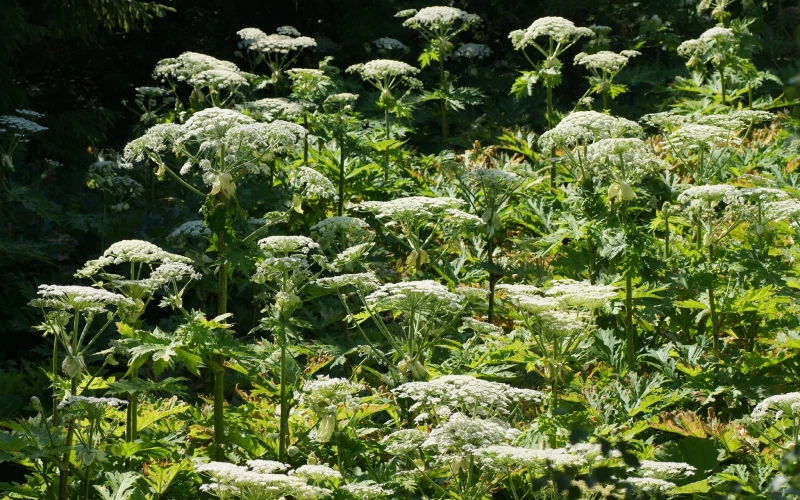Giant Hogweed
Description
Giant Hogweed is an invasive perennial and a member of the carrot or parsley family (Apiaceae), originating from Asia and Eastern Europe. Introduced for ornamental purposes, it has since escaped cultivation and spread across various parts of Canada, including Ontario and British Columbia. It poses a significant threat not only to human health, with its toxic sap causing severe dermatitis, but also to local ecosystems by outcompeting native flora [1].

© Kasper Malmberg via iNaturalist.org, used under CC BY
Habitat
This species is adaptable to various soil moisture conditions and thrives along moist area edges, in meadows, and is increasingly found in forage and pasture fields near river flats. Although Giant Hogweed prefers sunny locations, it can also grow in partially shaded areas. [2]
Identifying Features
Impacts
Management and Control
Managing Giant Hogweed requires caution due to its toxic sap. Effective measures include:
What You Can Do
For more detailed information on identifying and safely managing Giant Hogweed and to support conservation efforts, please visit resources such as:
1. Nicholas A. Page, Ronald E. Wall, Stephen J. Darbyshire, and Gerald A. Mulligan. 2006. The Biology of Invasive Alien Plants in Canada. 4. Heracleum mantegazzianum Sommier & Levier. Canadian Journal of Plant Science. 86(2): 569-589. https://doi.org/10.4141/P05-158
2. Trottier N, Groeneveld E, Lavoie C. Giant hogweed at its northern distribution limit in North America: Experiments for a better understanding of its dispersal dynamics along rivers. River Res Applic. 2017; 33: 1098–1106. https://doi.org/10.1002/rra.3149